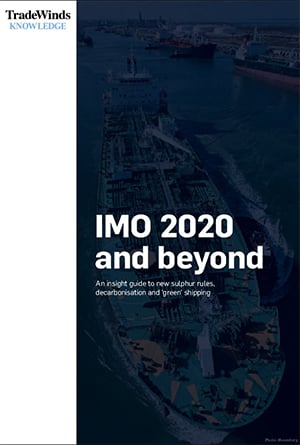An insight guide to new sulphur rules,
decarbonisation and ‘green’ shipping
Highlights include:- Full survey results on how the shipping professionals perceive and respond to environmental regulations. More than 600 shipowners, charterers, shipbrokers, shipmanagers and other professionals share their views on how the regulations affect their businesses and what can be the best ways to comply.
- Global bunker supply map. Shipowners have multiple options to meet the IMO 2020 rules, so we look at whether 18 of the world’s largest bunkering ports can supply high-sulphur fuel oil, low-sulphur fuel oil, marine gasoil, LNG and LPG in January.
- Decarbonisation pathways. Evaluations of how various operational and technical measures can reduce ship emissions and the potential of LNG, methanol, hydrogen, ammonia, batterie and biofuel as future marine energy.
- Regulatory timeline from 1992 to 2050. A detailed analysis of how bunker and shipbuilding rules are evolving over time at the IMO, regional and national levels.
- Investment case for low-carbon shipping. Discovery of political, economic, sociocultural and technological factors that shipping investors need to take into consideration, and market potential for stakeholders in various shipping segments.
- Quantification of environmental benefits. Explanations of the external benefits of green shipping rule in economic terms, which serve as a foundation for regulatory talks.
please click here to buy our full report at USD1150.
Have any questions? Contact us at intelligence@tradewindsnews.com.


